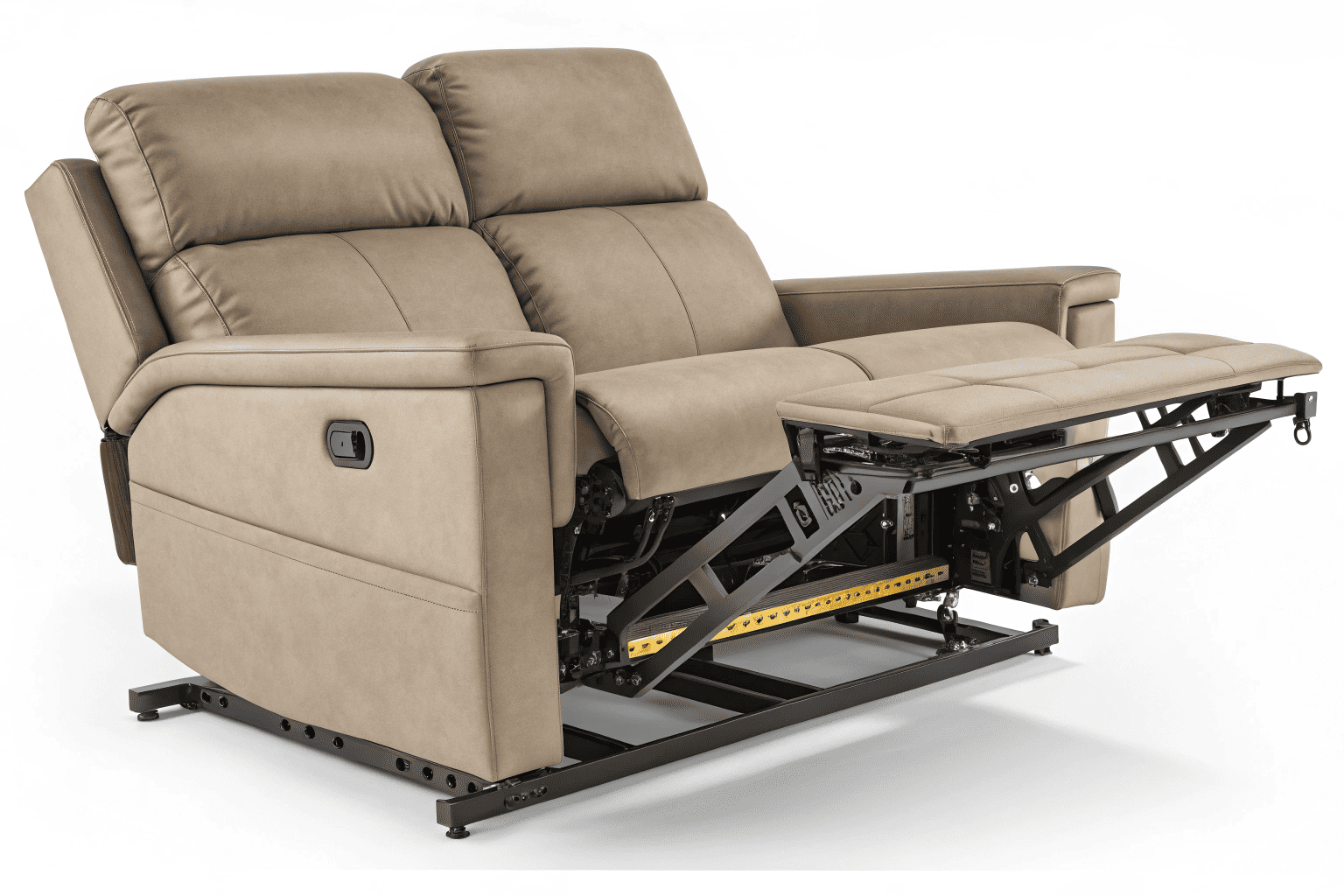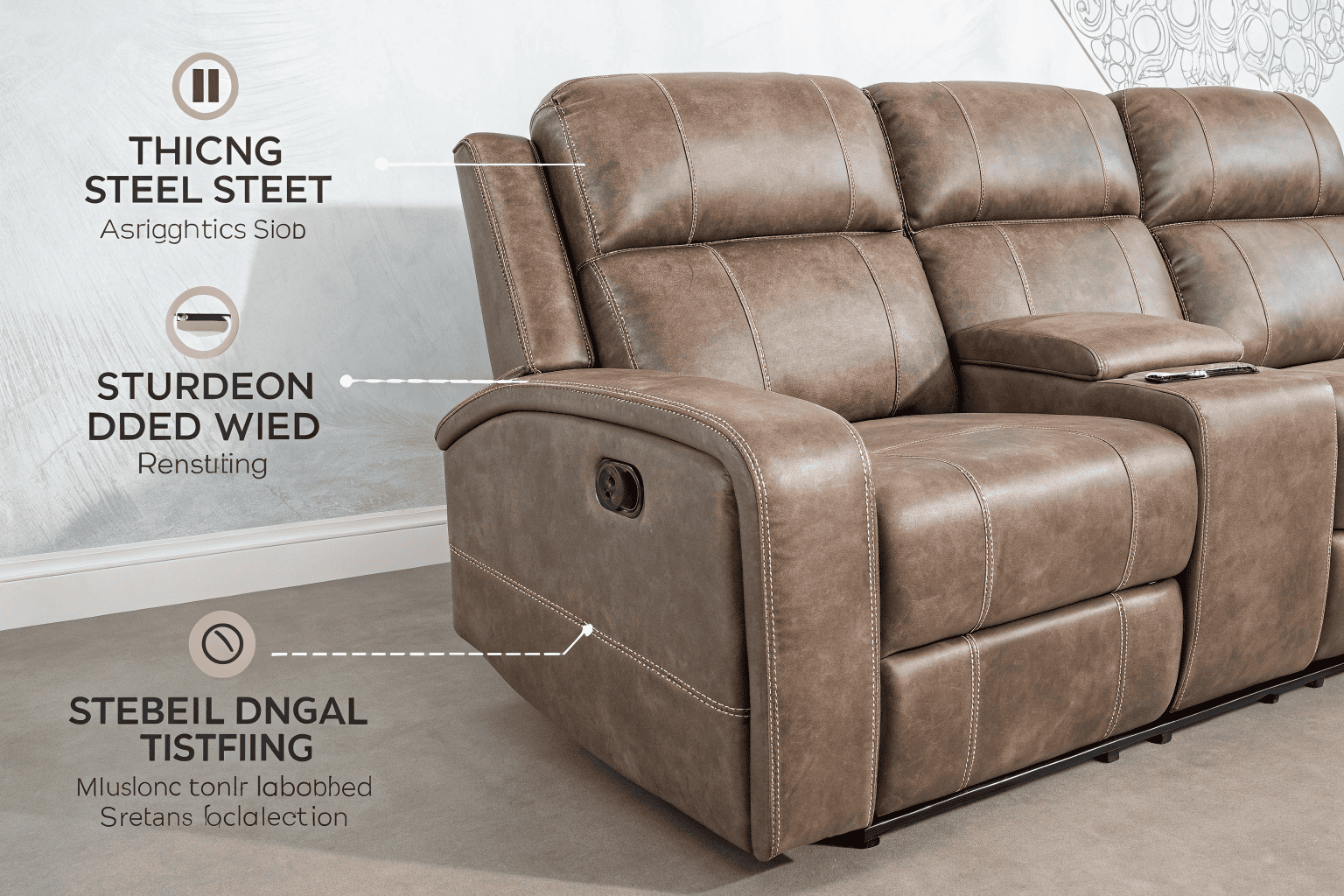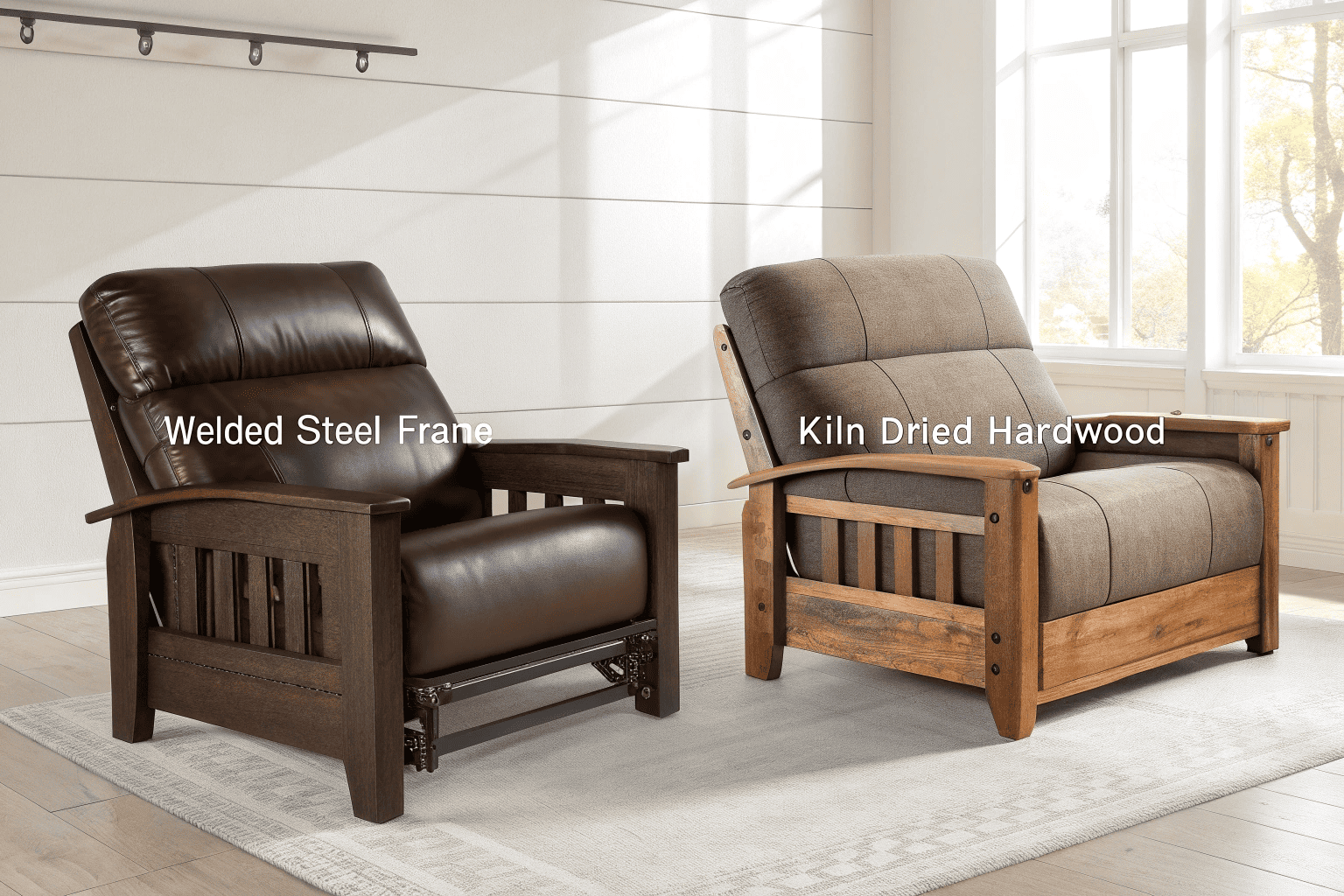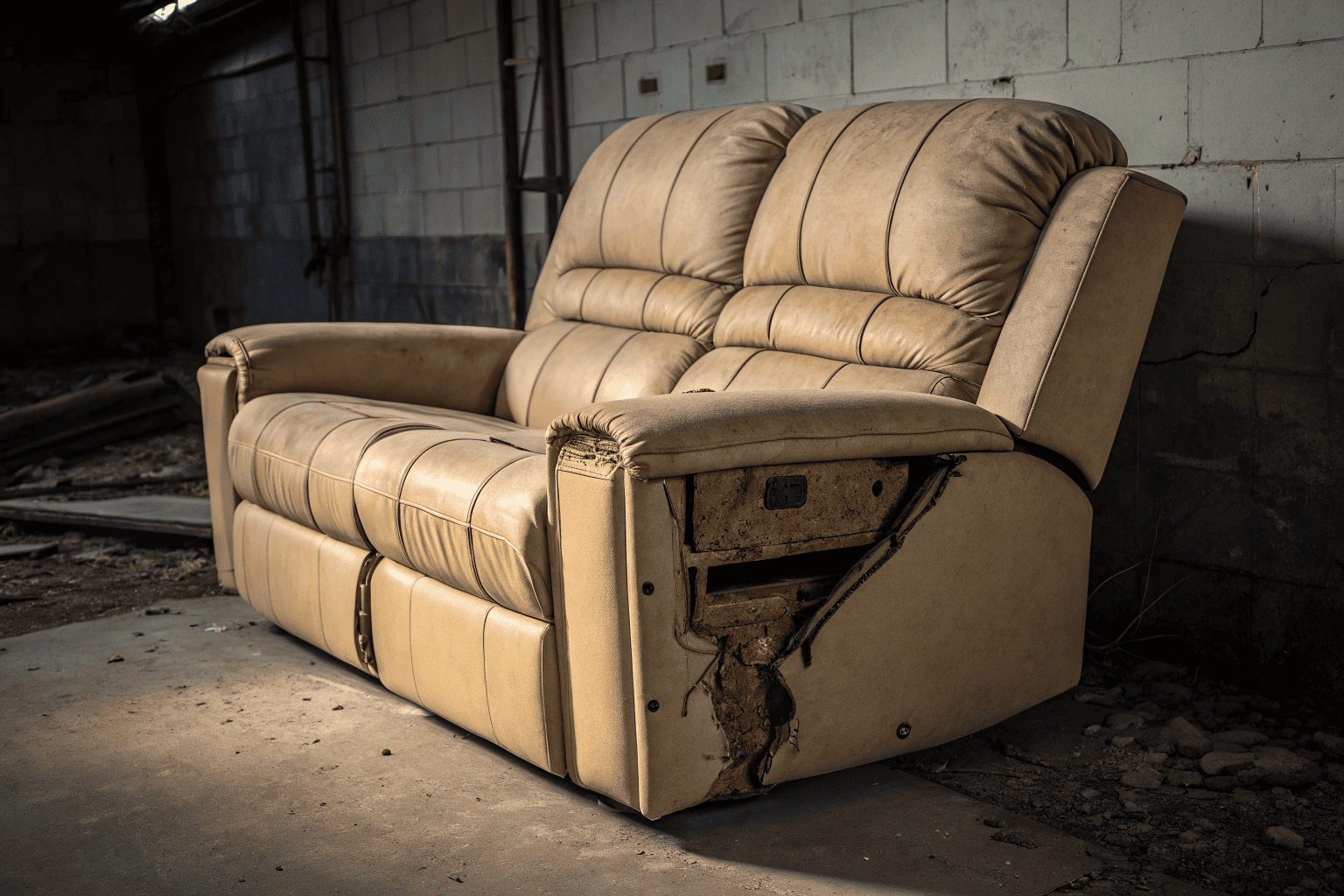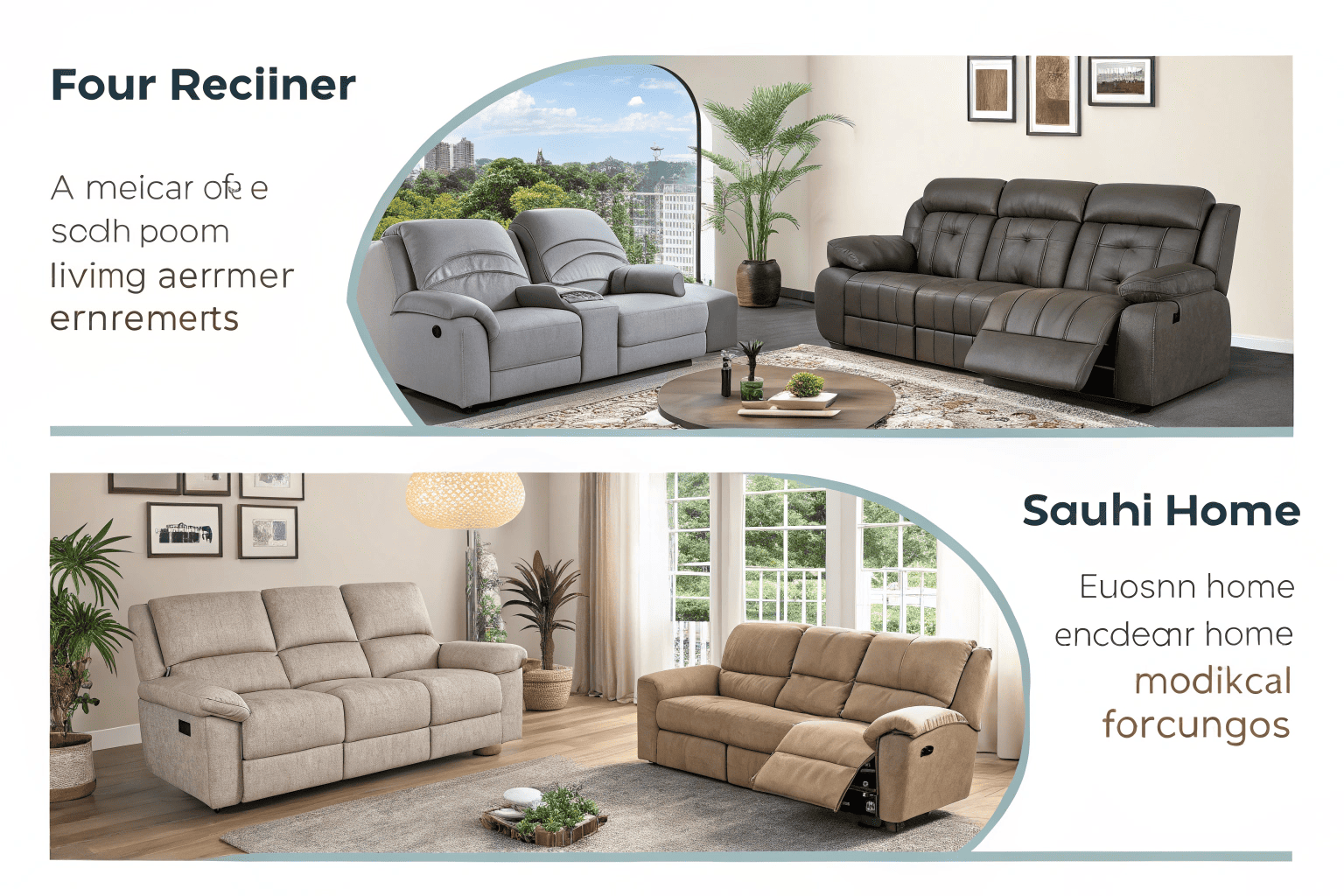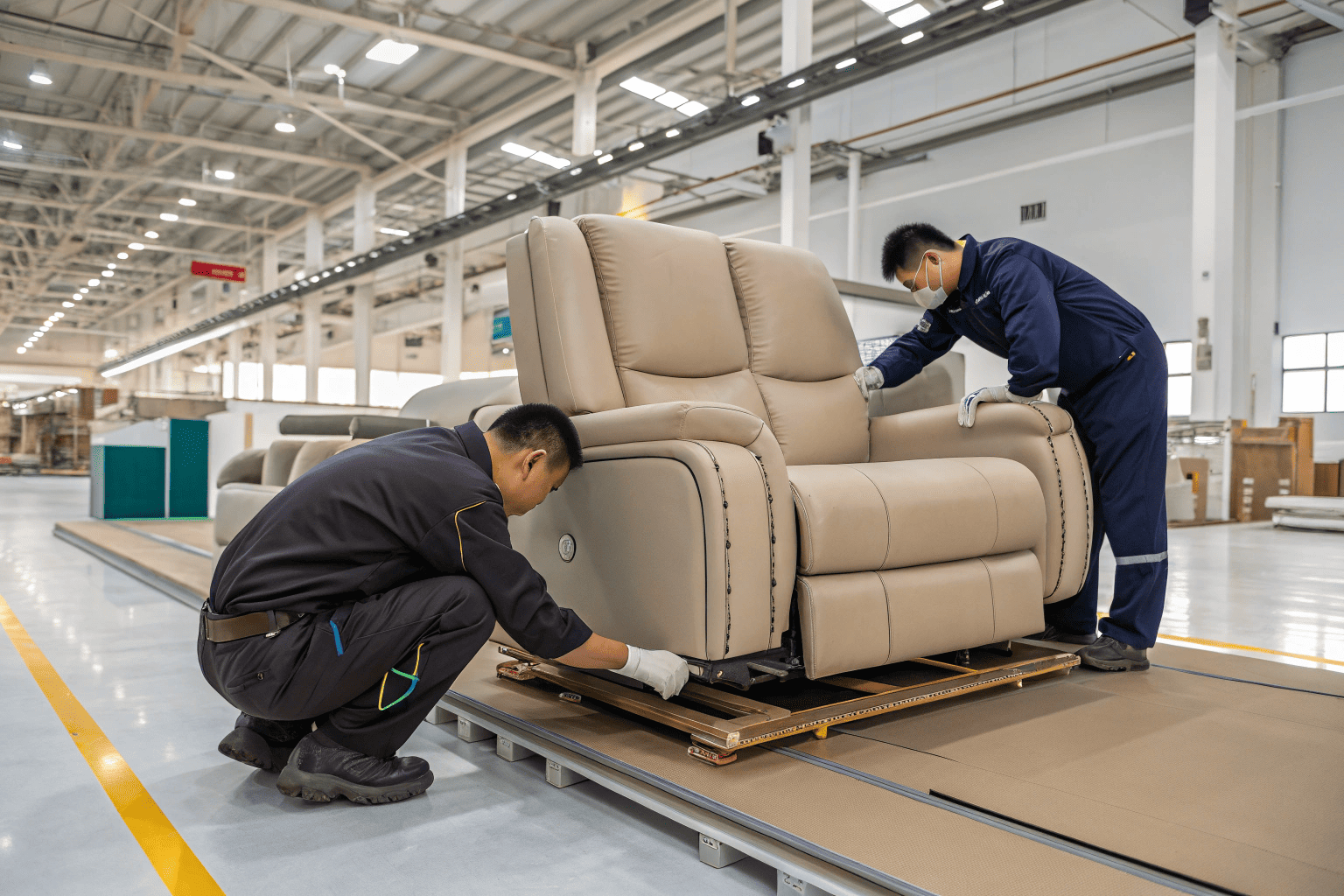People want recliners that last—but what really makes one sofa outlast another? Often, it comes down to the hidden frame inside.
A well-built recliner frame—whether metal, wood, or a mix—can last over 10 years if designed and tested properly.
If you’re sourcing recliner sofas and wondering what type of frame will hold up in your market, this guide breaks it all down—from materials to testing to what real importers choose.
What Makes a Sofa Frame Truly Durable?
You can’t see the frame, but it’s what carries all the weight—literally. Weak frames bend, squeak, or break after a short time.
A durable sofa frame needs strong joints, tested materials, and reliable load distribution across all seating areas.
The Core Elements of Recliner Frame Strength
1. Material Type
There are three main options:
- Steel: Very strong, long-lasting, ideal for mechanical recliners.
- Hardwood: Natural material, looks better, but varies in quality.
- Plywood/MDF: Common in budget models, not always durable.
2. Joint Construction
Look for mortise-and-tenon joints, metal brackets, or heavy-duty fasteners. Avoid just glue and staples.
3. Recline Mechanism Compatibility
The frame must support dynamic motion. If it’s too flexible, the mechanism can jam or fail over time.
| Feature | Weak Frame | Durable Frame |
|---|---|---|
| Materials | Softwood, thin MDF | Steel, kiln-dried hardwood, hybrid |
| Joint Type | Glue only | Screws + dowels + brackets |
| Recline Mechanism Mount | Floating | Braced and anchored |
| Testing Standard | None | 3,000–5,000 recline cycles |
| Upholstery Anchoring Points | Weak staples | Reinforced stitch & clip zones |
The more your market values long-term use—especially for family or hospitality settings—the more your sofa frame must hold up under weight, pressure, and daily motion.
Comparing Metal vs Wood Frames: Which One Lasts Longer?
Buyers often think metal is always stronger, but that’s not the full story. Both materials have strengths—and risks.
Metal frames resist bending and humidity1, while high-quality wood offers flexibility and aesthetic appeal2. Both can last 10+ years if engineered well.
Key Differences Between Metal and Wood Frames
Weight and Handling
- Metal frames are heavier. That makes them harder to transport but gives them a solid base for electric recliners.
- Wood frames are lighter, which helps with shipping and local delivery—especially in buildings without elevators.
Environmental Conditions
- Metal resists pests and mold. Ideal for tropical or humid markets.
- Wood can crack or warp if not properly treated. Kiln-dried hardwood3 is best.
Price Impact
- Steel frames usually cost more due to material and welding labor.
- Wooden frames vary more. Some cheap MDF versions fail quickly, while premium hardwood can cost even more than metal.
| Factor | Metal Frame | Wood Frame |
|---|---|---|
| Moisture Resistance4 | Excellent (anti-rust treated) | Depends on treatment (e.g., kiln) |
| Strength-to-Weight | High | Medium |
| Appearance | Hidden inside | Can be exposed or stylized |
| Longevity | High (if welded properly) | Medium to high |
| Cost | Mid-to-high | Low to high |
Some of our best results come from using metal in the base and motion zones, and hardwood in the decorative or support areas. It’s not either-or—it’s about the right blend.
Is Metal Always Better Than Wood for Recliner Sofas?
Metal sounds stronger, but it’s not perfect. Buyers should know both its advantages and its downsides.
Metal offers higher strength and precision, but also brings cost, weight, and temperature sensitivity.
Where Metal Excels—and Where It Struggles
Pros of Metal Frames
- Long-lasting under heavy use
- Supports electric recliner systems better
- Immune to insects and rot
- Consistent material with fewer natural defects
Cons of Metal Frames
- Can rust if untreated
- Heavier to transport
- More expensive to fabricate
- Can feel cold in unheated rooms (when exposed)
When to Choose Wood
Wood works better when:
- The recliner needs to match rustic or classic interiors
- The sofa frame must be lightweight or flexible
- The local labor force handles woodworking better than welding
- You need to reduce cost without sacrificing aesthetics
In short: metal isn’t “better”—it’s better in the right scenario. The key is matching frame type to project use and budget.
Hidden Problems with Cheap Sofa Frames
If your recliner looks good but breaks in six months, it’s probably the frame. Most failures come from hidden cost cuts inside.
Cheap recliner frames often use weak joints, low-density boards, or fake wood. These cause premature sagging, noise, or breakage.
Common Frame Weaknesses and How to Spot Them
Hollow or Fake Wood
Some frames use soft pine or hollow-core boards that compress under pressure. These might pass visual inspection but fail after 3–6 months of use.
Weak Mechanism Mounting
Without solid anchors, the recline mechanism wobbles or detaches. You’ll hear squeaking, feel misalignment, or even see gaps in the seat.
No Edge Support
The seat edge takes most of the user’s weight when sitting down. If the front rail is soft or poorly fastened, sagging appears fast.
Unfinished Surface Treatment
Wood that’s not kiln-dried will absorb moisture. It swells or cracks in humid environments. Metal that’s not powder-coated can rust quickly.
| Risk Factor | Result | Prevention Tip |
|---|---|---|
| Fake wood/MDF | Frame collapse or squeaking | Ask for material samples |
| No metal brackets | Loose joints | Require 3D or photo of structure |
| Weak center beam | Sagging middle seat | Use thicker plywood or metal base |
| Unprotected metal | Rust or stain on upholstery | Ask for powder-coating or paint |
| Minimal testing | Unexpected failure | Require lab testing proof |
This is where factory audits and sample tests really matter. Never trust surface appearance alone.
What Sofa Frame Type Works Best for Your Market?
Not all markets need the same recliner frame. What works in Brazil may fail in Singapore. Know what your buyers care about most.
The best recliner frame is one that balances strength, shipping, and cost—tailored to your customer’s lifestyle and environment.
Matching Frame Type to Buyer Needs
Market: Southeast Asia
- High humidity and compact spaces
- Use rust-treated metal, compact frames, or KD (knock-down) styles
Market: South America
- Family homes, more seating needed
- Strong wood base, dual recline, often larger models
Market: Europe
- Style and sustainability matter
- FSC-certified wood frames with metal support bars do well
Market: Middle East
- Mix of modern and traditional
- Hybrid frames that combine wood elegance and metal strength
| Market Region | Best Frame Type | Notes |
|---|---|---|
| Southeast Asia | Anti-rust metal | Avoid heavy frames; compact is key |
| South America | Hardwood with metal support | Bigger sofas with family use in mind |
| Europe | Hybrid (wood + steel) | Environment certification important |
| Middle East | Wood frame, reinforced joints | Style + comfort are both expected |
Understanding market trends will help you avoid returns, increase repeat orders, and gain buyer trust.
Manufacturer’s Note: How We Build Strong Recliner Sofa Frames
As a recliner sofa manufacturer working with buyers in over 30 countries, we’ve tested both metal and wood frame structures across various climates and usage patterns. Our takeaway? There’s no one-size-fits-all answer—only the right structure for the right purpose.
In high-humidity or high-traffic environments (like Southeast Asia or hotel lobbies), we prefer reinforced metal frames paired with anti-rust coatings. These offer better long-term stability, especially for electric recliners. For residential use, particularly in South America and the Middle East, we often combine kiln-dried hardwood with steel reinforcements—offering both strength and a warmer, more traditional appearance.
We work with Q235 steel tubing and high-density multilayer wood to ensure the internal frame holds up through thousands of recline cycles. Every structure is tested in our own lab for strength, recline smoothness, and frame deformation. Our team also considers loading efficiency: some projects need knock-down designs, while others prioritize durability above all.
In most of our top-selling models, we use a hybrid structure—steel in the stress-bearing zones, and treated wood where flexibility or upholstery shaping is needed. This gives the recliner both a sturdy core and aesthetic balance.
If you’re sourcing recliners and aren’t sure which frame suits your market, our team can advise based on your usage scenario, cost target, and shipping constraints. After all, frame strength isn’t about choosing metal or wood—it’s about knowing how to design both to last.
Conclusion
Choosing between a metal or wood recliner frame isn’t a matter of which is “stronger.” It’s about what works best for your customer’s use case. Metal is reliable, precise, and ideal for heavy-duty or humid settings. Wood is flexible, lightweight, and cost-effective—when high-quality and well-joined.
Cheap frames fail because they skip key steps: testing, treatment, and structure design. We’ve helped B2B buyers avoid those mistakes with hybrid solutions that match their target markets. Whether you’re sourcing for family homes, hotels, or apartments, start by asking what conditions the sofa will face. Then choose the frame that will stand the test of time.
Need help picking the right structure for your next container? Our team can walk you through your options—just reach out.
-
Discover the advantages of metal frames, including their durability and resistance to environmental factors. ↩
-
Learn how high-quality wood enhances furniture with its flexibility and beautiful design. ↩
-
Understand the benefits of kiln-dried hardwood in preventing warping and ensuring durability. ↩
-
Explore the importance of moisture resistance in furniture materials for lasting quality. ↩

